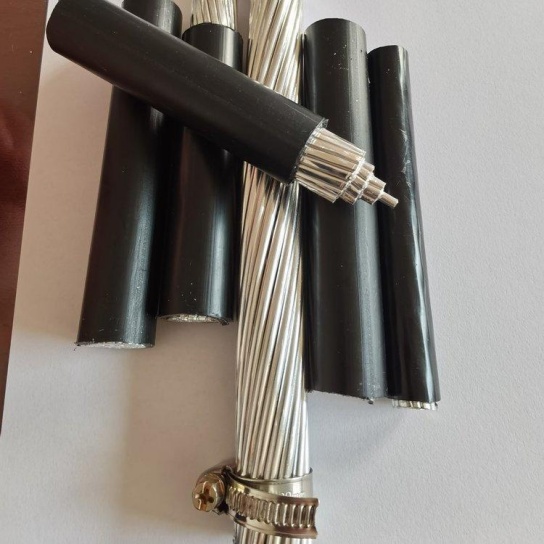Aircraft Cable Assemblies: Supporting Autonomous Flight Technology
The global aerospace industry is witnessing a rapid surge in autonomous flight technology, with applications ranging from unmanned aerial vehicles (UAVs) for logistics and surveillance to electric vertical takeoff and landing (eVTOL) aircraft for urban air mobility. At the core of this technological revolution lies a often-overlooked yet critical component: aircraft cable assemblies. Unlike traditional flight systems, autonomous platforms rely on real-time data transmission, precise control signals, and stable power distribution—all of which depend on high-performance cable assemblies to function seamlessly, even in harsh aerospace environments.
Key Requirements of Aircraft Cable Assemblies for Autonomous Flight
Autonomous flight systems impose unique demands on cable assemblies, far exceeding those of conventional manned aircraft. Reliability is paramount: any signal loss or power disruption could lead to catastrophic failures in autonomous navigation, obstacle detection, or flight control. To address this, modern aircraft cable assemblies for autonomous use are designed with redundant wiring configurations, ensuring that if one circuit fails, a backup maintains operation.
Electromagnetic interference (EMI) resistance is another non-negotiable feature. Autonomous aircraft are equipped with a dense network of sensors—including LiDAR, radar, cameras, and inertial measurement units (IMUs)—that generate and process sensitive electrical signals. Cable assemblies must incorporate EMI shielding (such as braided copper or aluminum layers) to prevent cross-talk between signals and external electromagnetic noise, which could distort data and compromise decision-making algorithms.
Weight and space efficiency also play a critical role. Many autonomous platforms, especially eVTOLs and small UAVs, have strict payload and size constraints. Cable assemblies are therefore engineered using lightweight materials like high-strength polymers (e.g., PTFE or polyimide) and thin-gauge, high-conductivity copper wires. This reduces overall aircraft weight without sacrificing mechanical strength or signal transmission capabilities. Additionally, high-temperature resistance is essential, as cables near engines or battery systems may be exposed to extreme heat; materials like silicone insulation ensure stable performance in temperatures ranging from -65°C to 200°C.
Applications in Core Autonomous Flight Systems
Aircraft cable assemblies serve as the “nervous system” and “power grid” for key autonomous flight subsystems, enabling coordinated and reliable operation:
- Flight Control Systems: Autonomous flight controllers depend on cable assemblies to transmit precise electrical signals to actuators (e.g., ailerons, elevators, and throttle valves). These cables must deliver signals with near-zero latency—often in milliseconds—to ensure the aircraft responds instantly to navigation commands or obstacle avoidance alerts. For example, in eVTOLs, cable assemblies connect the flight computer to rotor speed controllers, enabling smooth transitions between hover and forward flight.
- Sensor Fusion Networks: Autonomous aircraft rely on sensor fusion to create a comprehensive view of their environment. Cable assemblies link multiple sensors to the central processing unit (CPU), ensuring synchronized data flow. For instance, a UAV’s LiDAR and camera systems use shielded cable assemblies to transmit data simultaneously, allowing the autonomous algorithm to generate real-time 3D maps of the terrain.
- Energy Management Systems: Electric autonomous aircraft (such as eVTOLs) require cable assemblies that can handle high-voltage power distribution from batteries to motors and avionics. These cables are designed with low electrical resistance to minimize power loss, and they include thermal protection to prevent overheating during high-load operations (e.g., takeoff or rapid ascent).
- Remote Communication Links: Many autonomous aircraft maintain contact with ground control stations via satellite or radio links. Cable assemblies connect onboard communication modules (e.g., transceivers and antennas) to the aircraft’s power and data systems, ensuring uninterrupted two-way communication—critical for mission monitoring and emergency overrides.
Technological Innovations Enhancing Performance
To meet the evolving needs of autonomous flight, manufacturers are advancing aircraft cable assembly technology in several key areas:
- Smart Cable Assemblies: Integrated with fiber-optic sensors or RFID tags, these assemblies enable real-time health monitoring. Sensors can detect signs of wear (e.g., insulation degradation or wire fatigue) and transmit data to the aircraft’s diagnostic system, allowing for predictive maintenance and reducing unplanned downtime.
- Miniaturized Connectors: As autonomous aircraft become smaller and more compact, cable assemblies are paired with micro-connectors (e.g., MIL-DTL-38999 miniature series) that occupy less space while maintaining high reliability. These connectors feature robust locking mechanisms to withstand vibration and shock during flight.
- Sustainable Materials: With the aerospace industry focusing on carbon neutrality, manufacturers are developing cable assemblies using recycled copper and bio-based polymers. These materials meet the same performance standards as traditional options but reduce the environmental impact of production and disposal.
FRS: Your Trusted Partner for Autonomous Flight Cable Assemblies
As autonomous flight technology advances, the need for reliable, high-performance aircraft cable assemblies becomes even more critical. FRS, a leading manufacturer of aerospace-grade cable assemblies, specializes in designing solutions tailored to the unique demands of autonomous systems. With decades of experience in aerospace engineering, FRS leverages premium materials (such as EMI-shielded wires and high-temperature insulators) and precision manufacturing processes to produce cable assemblies that meet strict industry standards (including AS9100 and MIL-SPEC).
Whether you need lightweight assemblies for eVTOLs, EMI-resistant cables for sensor networks, or smart monitoring solutions for UAVs, FRS delivers custom-designed products that undergo rigorous testing—including vibration, temperature cycling, and signal integrity checks—to ensure optimal performance in the harshest flight conditions. Partner with FRS to equip your autonomous flight technology with the robust, future-ready cable assemblies it needs to operate safely and efficiently.






